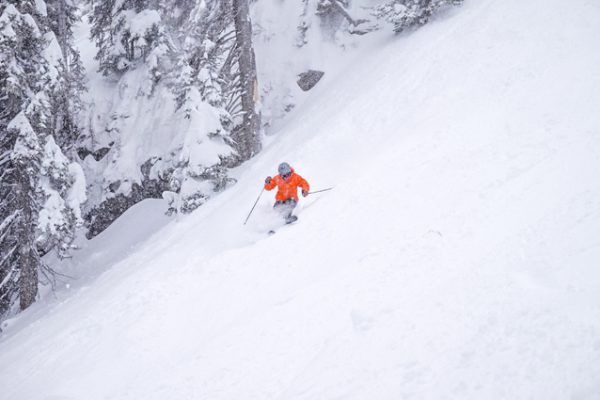Without “angulation,” all ski instructors have to our credit is pretty skiing, honed buttocks and livers that look like old leather saddlebags. Webster’s may have added it to the dusty corners of its dictionary in 1869, but it’s the lowly ski instructor who can take credit for keeping the term alive. So even if you’re an engineer or physician who uses the word regularly, please bite your tongue and let us have this one.

Angulation is simply the creation of an angle between the upper and lower body, which allows the skier to stay balanced against the forces of gravity and rotation they experience during a turn. Through angulating, the skier balances on the outside, or turning ski, and assuming this balance is maintained, the shape of the ski does the rest. Angulating is a bottom-of-the-turn move used to resist the forces of gravity when you are turning. Think of a tug-of-war in which the shoulders of the teams move toward each other to balance against the force exerted by their opponents.
Ironically, and in a sort of Zen way, by skiing well we have to do less. The skier who doesn’t angulate has to physically twist her feet and skis to change direction, resulting in a skid and lots of twisting of the upper body, possibly even a flail of the arms. The skier who angulates is able to exploit the design of her skis and get her equipment to do the work for her. Why buy a dog and then bark yourself?
It’s easy to see when someone is creating angulation: the legs will be leaning, while the upper body stays vertical. A nice easy visual cue is to see if the zip on your jacket is vertical. From the skier’s point of view, when creating angulation you may well feel a pinch in the outside hip, or a stretch in the back muscles.
Try this at home. Stand facing parallel to a wall, with your feet about a foot from the wall. Allow your body to topple toward the wall but push your hip out so that it’s the first thing to come in contact with the wall. See if you can do it again, but allow only the hip to come in contact. That’s angulating. Note what it feels like. Now do it through the bottom of each turn and you’ll feel your skis continue to grip and steer throughout the turn.



